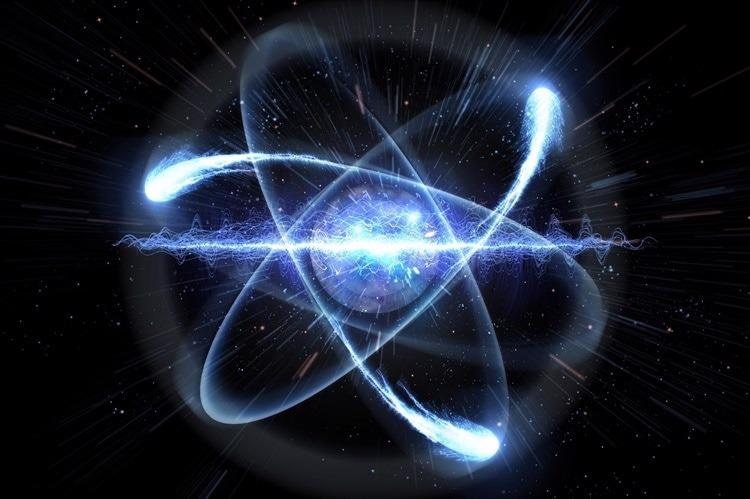A study published in Physica B: Physics of Condensed Matter presented atomic-level simulations to look into how the size of nanoparticles (NPs) and core-shell distribution influence the magnetization of spherical Co@Fe nanoparticles.

Study: Temperature dependent magnetization in Co@Fe Nanoparticles. Image Credit: Shutterstock.com/ Ezume Images
In said nanoparticles, iron constitutes the core while cobalt makes up the shell. The magnetization of the Co@Fe core-shell nanoparticles was also evaluated as a function of the interfacial exchange energy between the magnetic moments of iron and cobalt (JFe-Co).
What Are Magnetic Nanoparticles?
Magnetic nanoparticles (MNPs) are believed to have numerous uses in science and technology, notably in the realm of medicine. MNPs display distinct characteristics as temperatures change from high to low.
Characteristics such as superparamagnetic properties and exchange bias at room temperature make them a great choice for biomedicine systems and magnetic storage.
MNPs exhibit quantum properties such as magnetic tunneling at cooler temperatures. MNPs are also critical in nano-catalyzed chemical processes and solid-state extraction procedures. Alloy-based MNPs surpass other magnetic nanoparticle systems in potential magnetic uses due to their convenient refining of particle sizes and chemical structure and makeup.
The relevance of magnetic characteristics of MNPs is shown by phenomena such as exchange bias, spin frustration, increased coercivity, superparamagnetic activity, and depression in magnetic-ordering temperature (Tc).
MNPs are used to create functional materials due to these unique properties. MNPs display these intriguing and distinct properties that are not seen in their comparable bulk counterparts, owing to constrained size effects such as an increased surface-volume ratio and surface effects caused by symmetry breakdown of the crystalline structure at the particle's surface.
Despite substantial experimental investigations, a decent conceptual grasp of the dependency of Tc on altering size, content, and chemical organization had not yet been effectively covered.
The team used atomic level spin computations to conduct a theoretical investigation of Co@Fe core-shell structures. The goal was to study the influence of particle diameter and shell thickness on the nanoparticle Co@Fe system.
As a result, the Co@Fe pair was exposed to interfacial engineering. This included altering the particle diameter, shell thickness, and interfacial exchange energy of Fe-Co to optimize the attributes of the binary system under discussion. For core-shell particles, the Co@Fe notation means that iron constitutes the core, and cobalt comprises the shell.
Effect of Magnetic Moments on Nanoparticles
Nanoparticles exhibit lower magnetization than their bulk values because of spin canting, a process in which magnetic moments are slightly inclined about their axis instead of being aligned in a singular direction.
Spin canting is caused by a disparity among two opposing characteristics; isotropic transfer, which attempts to rearrange the moments perfectly parallel, and antisymmetric transfer, which tries to arrange the moments perpendicular to one another, resulting in decreased transfer that disrupts the moments near the surface, preventing them from being perfectly parallel.
Findings of the Research
From the standpoint of scientific and medical applications, how nanoparticles behave at rising heat levels and under the influence of a magnetic field is critical.
The temperature-dependent development of their spin structures, the core-shell influence, the size effect, and the shape effect must all be properly understood to adjust the magnetic ordering temperature.
With these considerations in mind, atomic level computations of Co@Fe nanoparticles were performed to examine the Curie temperature. To model the Curie Temperature, a Monte Carlo integrator was employed in conjunction with a classical spin Hamiltonian.
Magnetic ordering temperature (Tc) falls as NP diameter is increased, increasing surface area as a result. The level of interactive neighbors to the atoms on the surface and the exchange coupling is also reduced.
Furthermore, when the shell size grows, i.e., when the ratio of cobalt is increased, the value of Tc becomes smaller. The NP diameter and core/shell proportion modify the mean temperature-dependent magnetization, Tc, and spin structure in Co@Fe NPS, but the impact of size is opposite in pure Fe NPs.
Residual magnetism is seen in smaller NPs above the Curie temperature. This is due to the presence of local moment connections above Tc.
However, there are enough magnetic moments in larger nanoparticles to negate each other's influence, resulting in little magnetization. It was shown that the greater the interfacial exchange energy between moments, the greater the magnetic ordering temperature of the ferromagnetic system.
Continue reading: Discovering a New Form Of Magnetism in 'Magnetic Graphene'.
Reference
Ul Ahsan, J., & Singh, H. (2021) Temperature dependent magnetization in Co@Fe Nanoparticles. Physica B: Physics of Condensed Matter. Available at: https://www.sciencedirect.com/science/article/pii/S0921452621006475?via%3Dihub
Disclaimer: The views expressed here are those of the author expressed in their private capacity and do not necessarily represent the views of AZoM.com Limited T/A AZoNetwork the owner and operator of this website. This disclaimer forms part of the Terms and conditions of use of this website.